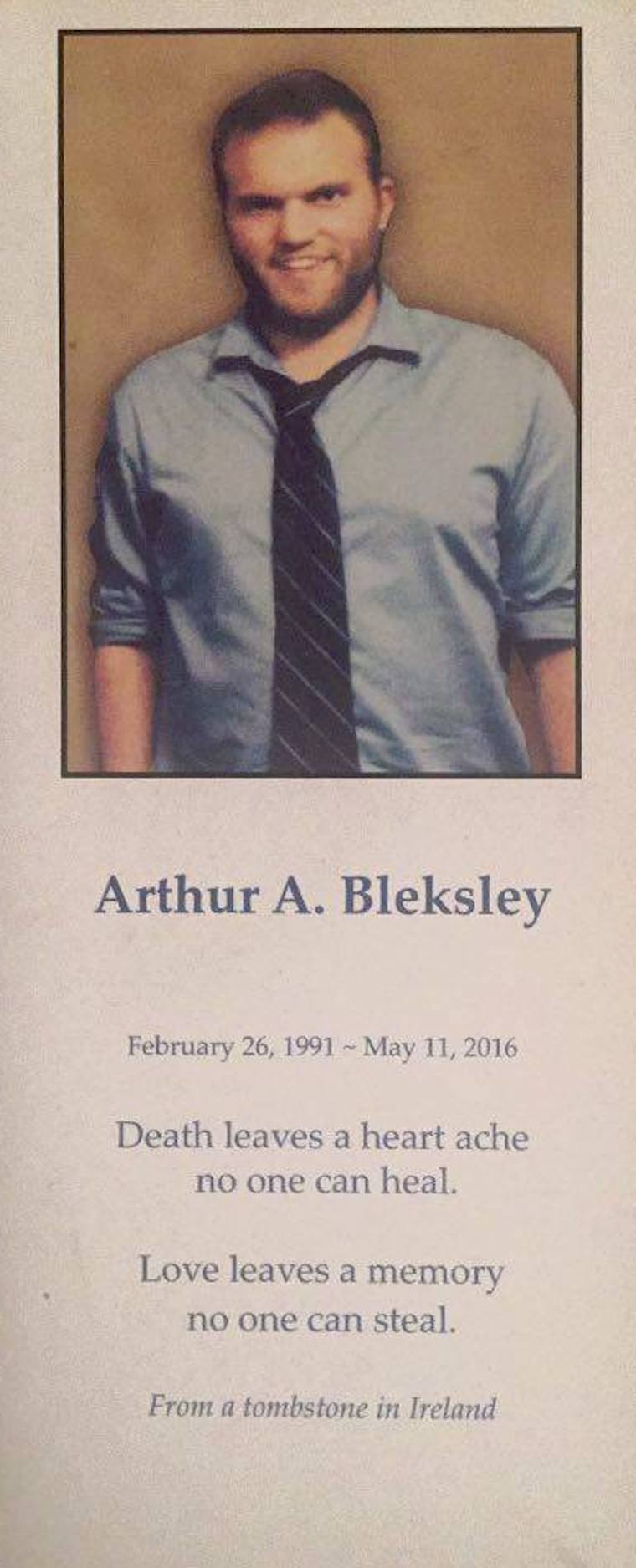Arthur Bleksley called his girlfriend one night in 2013 crying and drunk.
He told Amanda Warm, whom he had been seeing for three years, that his friend had died of a heroin overdose.
He said he didn’t understand why the friend would do that. He wondered if there was something he could have done to stop it, Warm said.
Perhaps, that’s why Bleksley started using heroin three weeks later.
On May 11th, 2016, Warm came home from work and found Bleksley in his Shorewood house sitting cross legged on the floor with a needle in his hand. He wasn’t breathing. He had thrown up on himself.
Warm was terrified. She couldn’t feel a pulse. She started chest compressions. She called his family.
She continued chest compressions until his father and younger sister arrived. While Bleksley’s sister called 911, Warm administered the drug Narcan, which can revive people who have overdosed on opioids. It didn’t work.
Enlarge

The official cause of death, according to the medical examiner, was an accidental overdose of heroin; the powerful, and often illicitly made opioid, fentanyl; and the tranquilizer, alprazolam.
For users of heroin and other opioids, Narcan is a last resort to prevent an overdose death. It can be injected or administered as nasal spray. If given earlier enough, it can quickly revive someone who took too much.
When someone takes too much heroin or some other opioid such as Oxycontin, the muscles that control breathing can relax so much that the person stops breathing.
Narcan, also known as naloxone, works by occupying receptors on brain cells that are affected by opioids.
Paramedics not only are using it more, but are finding they have to give larger doses to counter the effects of more powerful drugs such as fentanyl.
“I’ve seen people who were unresponsive who, once the Narcan is administered, can have a conversation like we’re having right now,” said Deputy Milwaukee Fire Chief Steven Riegg.
Narcan was administered by the Milwaukee Fire Department more than 1,000 times between January and the beginning of November last year — more than 3 times a day on average.
But the drug is not always effective such as when a person’s heart already has stopped.
Last year, a 36-year-old man was passed out from a fentanyl overdose on a county bus. He had labored breathing when firefighters arrived so they administered Narcan, but he could not be resuscitated.
And not all drug users are happy about getting Narcan because it cuts off the euphoric effect of the opioid.
“They are very angry at us for taking away their high,” Riegg said.
Other times they just are curious about how much Narcan was needed.
Milwaukee Fire Lt. Aaron Kriel recalled the case of a man they revived earlier this year on the South Side.
“He actually asked how much we gave him,” he said. “He was surprised it took so much. Some of these people are repeats.”